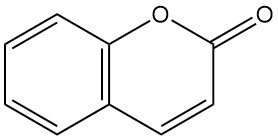
Butanal, also known as butyraldehyde, is an organic compound with the formula CH3(CH2)2CHO. It is a colorless flammable liquid with a strong, unpleasant odor, often described as bready, cheesy, or buttery.
n-Butanal is a naturally occurring compound present in trace amounts in essential oils, plants, and other substances.
Butanal is a highly reactive intermediate that is primarily used as a versatile building block in numerous chemical syntheses, mainly for the preparation of C4 and C8 compounds such as alcohols, carboxylic acids, and amines.
The global production of butanals exceeds 7 million tonnes per annum.
Table of Contents
1. Production of Butanal
Currently, the sole method employed for large-scale production of butanal is the hydroformylation process of propene.
Alternative routes, such as the dimerization of acetaldehyde to crotonaldehyde, followed by selective hydrogenation to n-butyraldehyde, are no longer employed commercially.
Other potential routes, including the dehydrogenation of butanol, remain inactive for commercial purposes.
The hydroformylation (or oxo) process was first identified in 1938 by OTTO ROELEN of Ruhrchemie in Oberhausen, Germany.
His investigation into the development of oxygenated compounds within cobalt-catalyzed Fischer-Tropsch chemistry led to the realization that olefins can interact with a mixture of carbon monoxide and hydrogen (currently referred to as synthesis gas) in the presence of specific metal catalysts, thereby generating aldehydes with an additional carbon atom compared to the initial olefin.

The production of butanal via hydroformylation involves the use of high pressures ranging from 20-45 MPa and temperatures between 140-180 °C.
Prior to the 1970s, cobalt was the preferred metal catalyst for the process; however, rhodium has since taken its place.
Rhodium is now utilized in conjunction with ligands to enhance stability, reaction rates, and improve the n:iso ratio.
Currently, three phosphines, including triphenylphosphine (TPP), and a complex bisphosphite are employed as ligands in commercial hydroformylation of propene.
Industrial hydroformylation of propene is typically conducted at temperatures of 70-150 °C and a pressure range of 1.5-5.0 MPa, with three out of four general processes using a homogeneous catalyst system.
The fourth process utilizes a two-phase water-organic solvent system that results in improved catalyst separation and optimized energy consumption.
Propene is the most widely used feedstock for hydroformylation, accounting for over 70% of the total oxo process feed, and converts to a mixture of n- and isobutyraldehyde.
The n/iso ratio of the butanal mixture obtained can range from 1/1 to 30/1, depending on catalyst-ligand system, concentrations, reaction conditions, and process design.
Butanals make up 90-98% of the product mixture, while minor quantities of impurities, including butylformate, n- and isobutanol, and aldehyde dimers, trimers, and other condensation products are formed.
These impurities are subsequently eliminated via multistep distillations.
2. Chemical reactions of butanal
Butanal is a reactive intermediate that undergoes typical reactions characteristic of saturated aliphatic aldehydes.
These common reactions include oxidation, which results in the corresponding carboxylic acid, hydrogenation, which produces the corresponding alcohol, reductive amination, leading to the formation of amines, and aldol condensation with either a different aldehyde or a ketone.
Moreover, butanal is capable of undergoing Tishchenko reactions, resulting in the production of esters. Numerous additional aldehyde reactions can be found in standard organic chemistry texts.
3. Uses of Butanal
Due to its high reactivity and wide availability, butanal is a crucial starting material for a diverse range of products.
The carbonyl group’s high reactivity and the easily abstractable α-proton facilitate many organic chemical reactions.
Typical commercially important butanal reactions include hydrogenation (reduction), oxidation, addition and condensation reactions, aldol condensations, Tishchenko reactions, reductive aminations, and aldol formations.
n-Butyraldehyde is a critical starting material for numerous C4 products, including n-butanol, n-butyric acid, n-butylamine, n-butyl acetate, n-butyl acrylate, and methacrylate.
Through aldol self-condensation, it provides a convenient route to C8 products such as the plasticizer alcohol 2-ethylhexanol, 2-ethylhexanoic acid, and many essential plasticizers, including di-(2-ethylhexyl) phthalate (DOP).
Aldol condensation with formaldehyde yields the commercially important polyol trimethylolpropane.
3.1 Hydrogenation
Catalytic hydrogenation of butanal forms butanol and occurs in both liquid-phase and gas-phase processes. These highly selective hydrogenation processes typically use nickel- or copper-based catalysts.
Butanal can be hydrogenated individually after separation, or the n/iso mixture can be hydrogenated with subsequent separation of n-butanol and iso-butanol by distillation.
3.2 Oxidation
Pure oxygen or air converts butanal to carboxylic acid in high yields. The reaction takes place even in the absence of a catalyst. Suitable catalysts include transition metals of groups 5–10, Cu, Ag, Ce, alkali metals, and alkaline-earth metals.
If oxidation is carried out in the liquid phase, metal naphthenates or carboxylates are often used as catalysts. In gas-phase processes, metal oxides deposited on carriers such as silica gel, kieselguhr, silicates, quartz, or alumina are generally used.
3.3 Addition and Condensation Reactions
A wide range of addition and condensation reactions occur when butanal reacts with itself or other carbonyl compounds, such as ammonia, amines, alcohols, nitriles, and other functional groups. Reactions include aldol condensations, Tishchenko reactions, aminations, addition of Grignard reagents, and many more.
The chlorination of butanal yields fragrances and pharmaceutical intermediates.
n-Butyraldehyde serves as a catalyst component for special polymerization reactions.
Reference
- Butanals; Ullmann’s Encyclopedia of Industrial Chemistry. – https://onlinelibrary.wiley.com/doi/10.1002/14356007.a04_447.pub2




